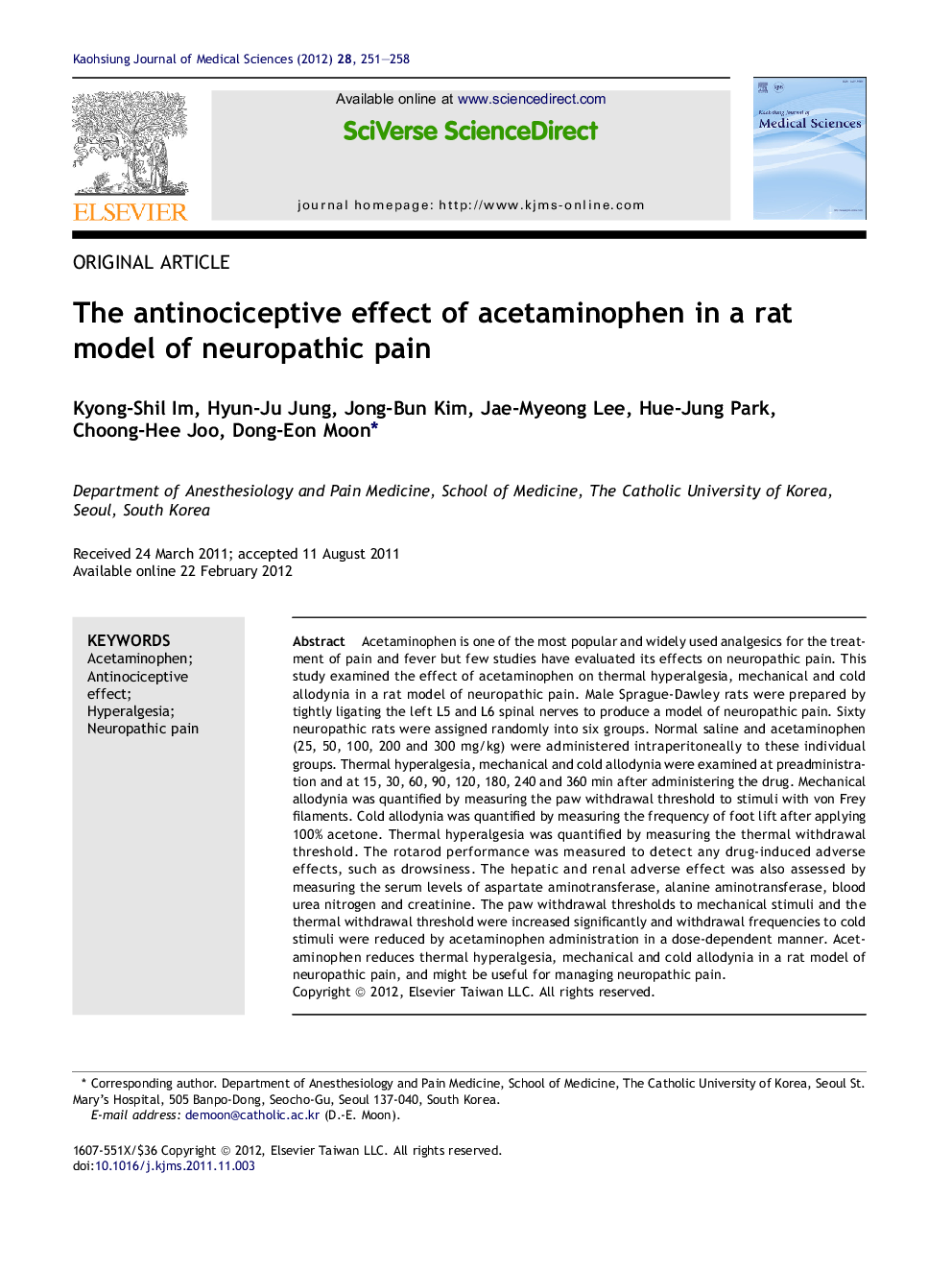| Article ID | Journal | Published Year | Pages | File Type |
|---|---|---|---|---|
| 3486307 | The Kaohsiung Journal of Medical Sciences | 2012 | 8 Pages |
Acetaminophen is one of the most popular and widely used analgesics for the treatment of pain and fever but few studies have evaluated its effects on neuropathic pain. This study examined the effect of acetaminophen on thermal hyperalgesia, mechanical and cold allodynia in a rat model of neuropathic pain. Male Sprague-Dawley rats were prepared by tightly ligating the left L5 and L6 spinal nerves to produce a model of neuropathic pain. Sixty neuropathic rats were assigned randomly into six groups. Normal saline and acetaminophen (25, 50, 100, 200 and 300 mg/kg) were administered intraperitoneally to these individual groups. Thermal hyperalgesia, mechanical and cold allodynia were examined at preadministration and at 15, 30, 60, 90, 120, 180, 240 and 360 min after administering the drug. Mechanical allodynia was quantified by measuring the paw withdrawal threshold to stimuli with von Frey filaments. Cold allodynia was quantified by measuring the frequency of foot lift after applying 100% acetone. Thermal hyperalgesia was quantified by measuring the thermal withdrawal threshold. The rotarod performance was measured to detect any drug-induced adverse effects, such as drowsiness. The hepatic and renal adverse effect was also assessed by measuring the serum levels of aspartate aminotransferase, alanine aminotransferase, blood urea nitrogen and creatinine. The paw withdrawal thresholds to mechanical stimuli and the thermal withdrawal threshold were increased significantly and withdrawal frequencies to cold stimuli were reduced by acetaminophen administration in a dose-dependent manner. Acetaminophen reduces thermal hyperalgesia, mechanical and cold allodynia in a rat model of neuropathic pain, and might be useful for managing neuropathic pain.
